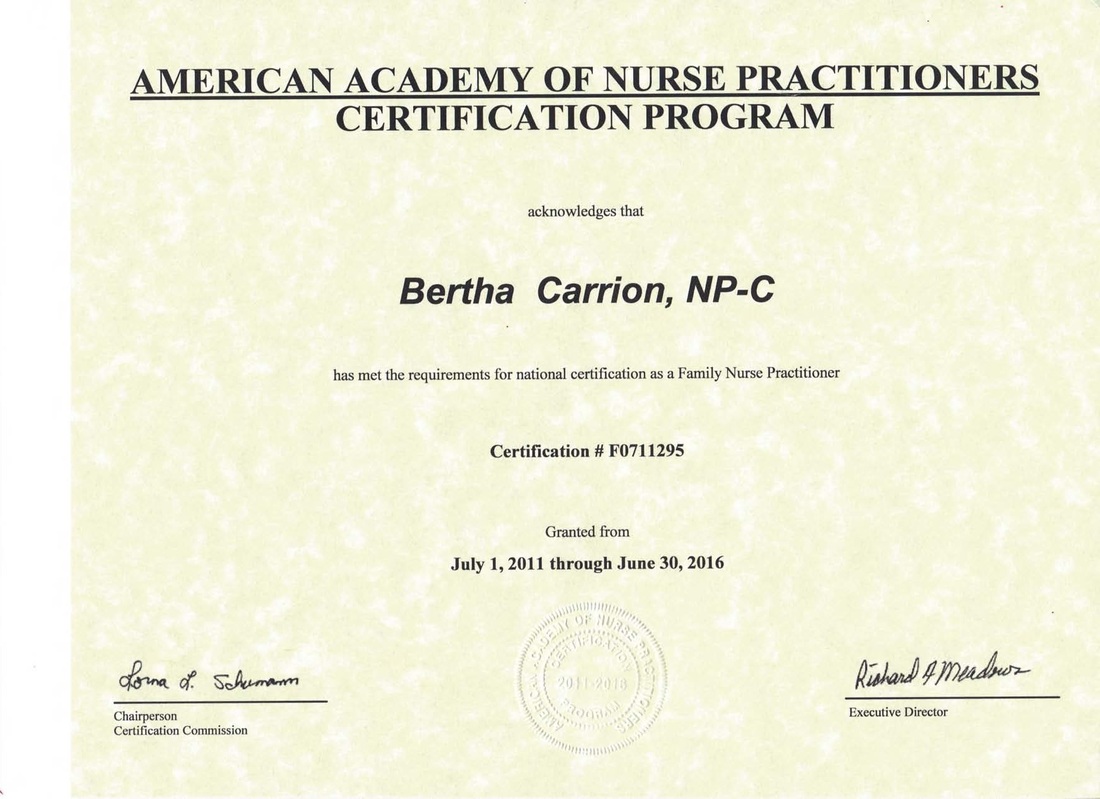What is a Dermatology Nurse Practitioner?
As a Dermatology Nurse Practitioner, you’ll spend a lot of time up close and personal with another person’s skin.
This career focuses on treating diseases and medical issues that can arise on the skin.
Some of the conditions that a Dermatology Nurse Practitioner may take care of include acne and skin cancer.
It’s also possible to specialize in certain areas, like cosmetic procedures or chronic conditions.
Duties
Being a Dermatology Nurse Practitioner means that you are in an advanced role.
You should have a solid knowledge of nursing roles and equipment, but a Dermatology Nurse Practitioner will also have other duties:
- Examine skin for issues or disease
- Monitor and record patient medical history and test results
- Provide pre and post-op care
- Perform and assist with cosmetic procedures
- Educate patients on skin
- Assess wounds including burns and ulcers
Salary
The average Dermatology Nurse Practitioner in the United States makes around $98,000 a year.
As a newly hired Dermatology Nurse Practitioner, or one with less experience, it’s more likely to expect around $91,000 a year.
After many years of experience, specializations, and certifications, it’s possible to earn up to $104,000 a year.
Depending on your education level and the population of the area in which you work, these numbers can change.
Dermatology Nurse Practitioner’s that work in larger populations and where people have more money will usually make more than someone who lives in a smaller town with a lower economic status.
Annually National Average Salary: $132,000
Average Annual Salary by State
| State | Avg. Annual Salary |
|---|---|
| Alabama | $109,650 |
| Alaska | $142,340 |
| Arizona | $132,920 |
| Arkansas | $116,030 |
| California | $173,190 |
| Connecticut | $141,140 |
| Delaware | $130,190 |
| District of Columbia | $137,600 |
| Florida | $128,340 |
| Georgia | $125,490 |
| Hawaii | $135,020 |
| Idaho | $131,380 |
| Illinois | $128,880 |
| Indiana | $126,520 |
| Iowa | $133,020 |
| Kansas | $127,900 |
| Kentucky | $116,930 |
| Louisiana | $124,850 |
| Maine | $127,750 |
| Maryland | $127,100 |
| Massachusetts | $145,140 |
| Michigan | $127,200 |
| Minnesota | $128,120 |
| Mississippi | $122,930 |
| Missouri | $124,600 |
| Montana | $131,560 |
| Nebraska | $127,950 |
| Nevada | - NA - |
| New Hampshire | $133,660 |
| New Jersey | $140,470 |
| New Mexico | $136,620 |
| New York | $148,410 |
| North Carolina | $124,830 |
| North Dakota | $121,200 |
| Ohio | $121,250 |
| Oklahoma | $127,120 |
| Oregon | $148,030 |
| Pennsylvania | $126,730 |
| Rhode Island | $139,600 |
| South Carolina | $113,950 |
| South Dakota | $122,300 |
| Tennessee | $108,180 |
| Texas | $130,930 |
| Utah | $131,680 |
| Vermont | $130,580 |
| Virginia | $122,180 |
| Washington | $143,620 |
| West Virginia | $122,140 |
| Wisconsin | $130,490 |
| Wyoming | $126,060 |
| Guam | $99,170 |
Annual Average Salary: Top 5 States
The top earning state in the field is California, where the average salary is $173,190.
These are the top 5 earning states in the field:
Conducted by: Bureau of Labor Statistics, Department of Labor.
How to Become a Dermatology Nurse Practitioner
Step 1Earn a Masters Degree
Since the role of a Dermatology Nurse Practitioner is a senior position, education is very important.
In order to work as a Dermatology Nurse Practitioner, you’ll need to have at least a Master’s degree in a specialty role-like Dermatology nursing.
It’s also required that you are a licensed registered nurse, and have 2,000 hours of dermatology experience before you are able to begin a Master’s degree program.
While in school, you will likely have hands-on experience in the field that you want your specialty in.
This can be done by working an internship or by doing clinicals, it just depends on the program that you are enrolled in.
It is possible to earn a degree online, however, it is important to remember that you need real-life experience in the field as well.
As with most nursing programs, the typical courses offered in a Masters of Nursing program include:
- Chemistry
- Anatomy
- Physiology
- Community Health Nursing
- Clinical Problem Solving
- Advanced Nursing Management
- Ethics in Nursing and Healthcare
A Master’s degree program can take anywhere from a year to two years to complete.
Step 2Become Certified
It’s important that once you earn your degree, you become certified as a Dermatology Nurse Practitioner.
At this point, you should already have nursing experience and be a registered nurse.
In order to earn a Dermatology Nurse Practitioner certification, it’s required that you have at least 3,000 hours of experience in dermatology and also have a Nurse Practitioner certification.
Earning a Nurse Practitioner certification varies from state to state, so this is something you’ll need to discuss with your employer or nursing board.
Some of the certification boards that certify Nurse Practitioners are:
- Pediatric Nursing Certification Board
- American Nursing Credentials Center
- American Academy of Nurse Practitioners
- American Nurses Association
After you become certified as a Nurse Practitioner, it’s time to become certified in dermatology.
The certification of Dermatology Nurse Practitioner is awarded to those that show excellent promise in the dermatology field.
The certification requires an exam and depending on where you go to take the exam, the number of questions may vary.
However, most exams cover the following information:
- Infections, infestations, and bites and stings
- Hair, nails and mucous membranes
- Neoplasms
- Patient problem areas
- Cosmetic dermatology
Step 3Gain Employment
That’s right.
After you become certified as a Dermatology Nurse Practitioner, it’s time to begin working.
Most of the time, it’s possible to get a job working for the employer that helped with your internship.
It’s also possible for registered nurses to gain employment in their previous hospital or office.
However, it’s necessary to have a Dermatology Nurse Practitioner experience before becoming certified.
With this career, it is possible to obtain an advanced position such as Pediatric or Cosmetic Dermatology.
These positions will allow you to work in a specialized career.
For more information on where to gain employment as a Dermatology Nurse Practitioner, contact:
- American Academy of Dermatology
- Women’s Dermatologic Society
- American Board of Dermatology Henry Ford Health System
With the aging population, the need to diagnose and treat skin conditions will continue to rise, so finding employment should be easy.
Education
Education is very important when it comes to a career as a Dermatology Nurse Practitioner.
A Master’s degree is required for this career, which means that you need to have a Bachelor’s degree in nursing before you enter a Master’s degree program.
Before obtaining a Master’s degree, it’s crucial that you have experience in nursing, especially if you want to work as a Nurse Practitioner.
It’s important to gain experience working in the dermatology department, as well.
After applying your education to your career for a few years, earning a Master’s degree is the next step.
Having a Master’s degree in Nursing will open up plenty of doors, especially as a Nurse Practitioner.
A typical Master’s degree takes around two years to complete, but some schools do have one year accelerated programs.
Some of the courses that are available in a Masters of Nursing program include:
- Research Methodologies and Critical Appraisal
- Principles of Health Economics
- Dermatology Research
- Clinical Implications of Research
Many Master’s degree programs require that students enter into a residency as a physician would.
This residency can lead to employment after college, which works great for all involved.
The first year of residency may involve a more rounded area of study.
For example, you may have to work in areas such as:
- Internal Medicine
- Pediatrics
- Emergency Medicine
- Family Practice
This experience can help with getting used to a diverse population of patients, and also gives you knowledge about different areas of medicine.
After the first year, it’s time to get into dermatology.
It is required to have three years of experience as a Dermatology Nurse Practitioner before becoming certified.
Another great thing about residencies is that they can push people to earn a Ph.D.
PhDs can allow for growth in your career, and may even allow you to open your own practice.
Video About The Career
Certification
It is a legal requirement to become a registered nurse in order to work as a Dermatology Nurse Practitioner.
There is a certification that you can obtain after working as a Dermatology Nurse Practitioner for several years.
This certification is called Certified Dermatology Nurse Practitioner.
The Certified Dermatology Nurse Practitioner credential can be obtained by taking the Dermatology Nurse Practitioner Exam.
In order to be eligible for this exam, it is required that you have at least:
- Two years of dermatology experience
- Have a current registered nursing license
- Masters degree in nursing
- National certification as a Nurse Practitioner
This exam consists of 175 multiple-choice questions.
There are three major areas that should be studied in order to pass this exam.
These areas are:
- General dermatology including cosmetic
- Dermatology surgery
- Phototherapy
Along with the dermatology sections, you’ll also be required to answer nursing questions about:
- Assessing and monitoring patients before, during, and after treatment
- Planning, administrating and monitoring of treatments
- Selecting appropriate strategies for care
- Coordinating care
- Public safety
This exam is administered through C-NET or the Center for Nursing Education and Testing.
You can register for this exam three times a year, and it is required that you renew the certification every 3 years.
The current cost to take this test is $275.
Most places of employment will reimburse exam takers, especially if they pass the exam and become certified.
While this is the major certification to become a Dermatology Nurse Practitioner, there are other opportunities with specializations in:
- Cosmetic dermatology
- Tattoo removal
- Laser procedures
There are possibilities to earn specializations and certifications throughout the nursing profession, earning ones that are particular to your field will gain you so much in your career.
Employers look for people who have shown that they are competent in what they do, and having a certification can help you with that in the future.
Certification Example:

Average Training Program Duration: 4+ Years
Most certifications to work as a Dermatology Nurse Practitioner only require that you take an exam.
However, some colleges, hospitals, and health facilities provide training programs that can last from two days to a week.
These programs can range in price from $1,000 to $3,000.
It all depends on if you want to take a class or not, some nurses do it to learn hands-on experience, but others feel that they had enough of that with working and class time.
Taking a certification exam can take around 3-4 hours.
Popular Degree Programs
Job Outlook
There is no need to worry about a career as a Dermatology Nurse Practitioner in the future.
It seems that there will be significant growth in this job, as much as 26 percent within the next decade.
Due to the growth in technology and the demand for medical services, many people are finding that working as a nurse practitioner can be as rewarding as working as a doctor.
Dermatology is becoming increasingly important as well, as skin health has grown in popularity over the years.
Those that work in smaller communities will likely not see as much growth as people who work in larger cities.
Employment Growth Projection: 28%
2018
2028
That's a higher than average projected growth of 53,300 jobs.
Should You Become a Dermatology Nurse Practitioner?

Overall Satisfaction: High
Most Dermatology Nurse Practitioner work in dermatology clinics instead of hospitals or other high-stress areas.
This provides a more satisfactory job outlook because it’s easier for the Dermatology Nurse Practitioner to go at their own pace and enjoy their patients.
Having your own clinic or working for a private clinic can allow you flexibility in hours that make it easier to provide that work/homelife balance.
It’s typical that a Dermatology Nurse Practitioner will not be on call or have stressful emergencies to attend to, either.

Average Salary: High
Dermatology Nurse Practitioners can make around $98,000 a year on average in the United States.
With more education, certifications, and time spent in the career, it is possible to earn around $104,000 as a Dermatology Nurse Practitioner.
Those that are just beginning their career and do not have the same amount of experience can expect around $91,000 a year to start.
Dermatology Nurse Practitioners who work in larger populations will typically have higher salaries than those who work in smaller populations.

Job Growth Outlook: High
Those that work as nurse practitioners should not worry about the fate of their careers.
The job outlook for a Dermatology Nurse Practitioner is projected to grow around 26 percent within the next decade.
This is much higher than many other careers in the same field.
Growth occurs in this career because of the demand for dermatology treatments.
Since Nurse Practitioners can perform many of the same duties as doctors, people interested in becoming medical staff become Dermatology Nurse Practitioners instead.

Education Duration: 4+ Years
It can take a while to become a Dermatology Nurse Practitioner.
The reason for that is nurse practitioners can do most of the same medical treatments as physicians, so they need a lot of education to learn everything they need to know.
That’s why it requires a Master’s degree to work as a Dermatology Nurse Practitioner.
A Master’s degree program can take anywhere from 1 to 2 years to complete.
However, in order to earn a Masters, you have to have a Bachelor’s degree.
This can take around four years to finish.
This means that it can take anywhere from 5-6 years to become a Dermatology Nurse Practitioner.

Personal Skills Needed
In order to work as any type of nurse or practitioner, it’s important to have empathy and consideration for other people.
Patients can be embarrassed about their skin issues, as a Dermatology Nurse Practitioner it’s important to treat each patient with respect.
Being a Dermatology Nurse Practitioner should come with great leadership skills, as well as:
- Compassion
- Excellent communication skills
- Interpersonal skills
- Problem-solving skills
- Decision-making skills
- Ability to work with others
- Excellent assessment skills
- Attention to detail
- Advanced knowledge in physiology and dermatology
Frequently Asked Questions
Q. What is the average salary for a Dermatology Nurse Practitioner?
The average salary in the United States for a Dermatology Nurse Practioner is around $98,000 a year.
This should not be expected right after gaining employment, as its typical for a new Dermatology Nurse Practitioner to make around $91,000 at the beginning of their career.
For those with certifications, specializations, and years of experience, the average salary can be around $104,000 a year.
Q. How long does it take to become a Dermatology Nurse Practitioner?
Since the role of a Dermatology Nurse Practioner is at the senior level, education is important.
It is required that you obtain at least a Masters degree in Nursing in order to work as a Dermatology Nurse Practitioner.
This can take around 2 years to complete, however, the required Bachelors degree that you’ll need to have to enter a Masters degree program can take around 4 years.
All in all, it is around 6 years before you’ll be able to work as a Dermatology Nurse Practitioner.
Q. What does a Dermatology Nurse Practitioner do?
A Dermatology Nurse Practitioner helps people with skin illnesses and issues.
This requires assessing a patient’s skin, determining treatment, and then taking care of the issue with the treatment.
In the role, a Dermatology Nurse Practitioner will also speak with other medical health professionals in order to provide the best care for their patients.
Q. What is the demand for Dermatology Nurse Practitioners?
With the rise in cosmetic surgery, skin issues, and the aging population, the demand for Dermatology Nurse Practitioners keeps growing.
More people are going to the dermatologist to fix their skin issues, get botox, treat diseases, and much more.
The baby boomer population adds to this rise due to the continued need for medical care.
Skin health is important, and will likely remain in high demand for a long time.
Q. How much does it cost to become a Dermatology Nurse Practitioner?
On average in the United States, a Bachelors degree can run between $15,000 and $35,000 for all four years.
This depends on the school that you attend, and how long you are in school.
The average Masters degree program can cost anywhere from $10,000 to $35,000 as well.
This means that it can cost between $25,000 and $70,000 to become a Dermatology Nurse Practitioner.










